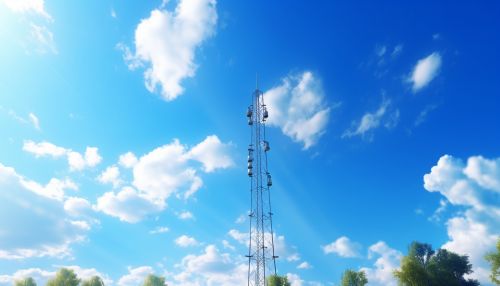Unguided Media
Introduction
Unguided media, also known as wireless media, refers to the transmission of data without the use of physical conductors or paths. It is a method of transmitting and receiving signals through the air or space using radio, microwave, or infrared signals. This type of media is often used in telecommunications and computer networking, where signals are broadcasted through the open space, hence it is often referred to as broadcast media Learn more.


Types of Unguided Media
There are three primary types of unguided media: radio waves, microwaves, and infrared waves.
Radio Waves
Radio waves are a type of electromagnetic wave that is widely used for wireless communication. They are generated by electronic devices and have wavelengths that range from one millimeter to 100 kilometers. They are primarily used in mediums like television, mobile phones, and radio broadcasting. The use of radio waves for wireless communication requires an antenna that sends and receives these waves Learn more.
Microwaves
Microwaves are another type of electromagnetic wave used in data transmission. They have a shorter wavelength than radio waves, usually less than one meter. Microwaves are used in various applications including television broadcasting, radar systems, and satellite communication. They are also used in mobile telephony where they can carry voice and data signals over long distances with high quality Learn more.
Infrared Waves
Infrared waves are electromagnetic waves with a wavelength longer than visible light but shorter than microwaves. They are commonly used in short-range communication systems such as remote controls, wireless mice, and keyboards. Infrared waves are also used in certain types of wireless local area networks (WLANs) Learn more.
Advantages and Disadvantages of Unguided Media
Unguided media has several advantages and disadvantages that make it suitable for certain applications and unsuitable for others.
Advantages
Unguided media does not require any physical connection between the transmitting and receiving devices, making it more flexible than guided media. It allows for mobile communication and can cover large geographical areas. Furthermore, the installation and maintenance costs of unguided media are often lower than those of guided media.
Disadvantages
However, unguided media also has several disadvantages. The main one is that it is more susceptible to interference and noise than guided media. This can affect the quality of the transmitted data. Additionally, unguided media is less secure than guided media as the signals can be intercepted by unauthorized users. Lastly, the range of unguided media is often limited by the line of sight between the transmitting and receiving devices.
Applications of Unguided Media
Unguided media is used in a wide range of applications, from personal devices to large-scale communication systems.
Personal Devices
Many personal devices such as mobile phones, tablets, and laptops use unguided media for wireless communication. This allows these devices to connect to the internet and communicate with other devices without the need for wires.
Broadcast Media
Unguided media is also used in broadcast media such as radio and television. Radio stations use radio waves to transmit audio content to radios in homes, cars, and portable devices. Television stations use both radio waves and microwaves to transmit audio and video content to televisions.
Satellite Communication
Satellites use unguided media to transmit data to and from the earth. This is used for a variety of applications including weather monitoring, global positioning systems (GPS), and satellite television.
Conclusion
Unguided media plays a crucial role in modern communication systems. Its flexibility and ease of use make it an ideal choice for many applications, despite its limitations. As technology continues to advance, the use of unguided media is expected to grow and evolve.
